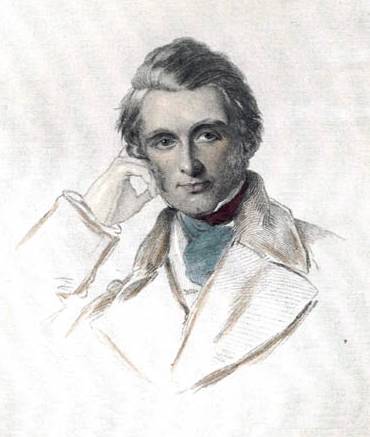The second point to which I wish at present to direct attention has reference to the arrangement of light and shade. It is the constant habit of nature to use both her highest lights and deepest shadows in exceedingly small quantity; always in points, never in masses. She will give a large mass of tender light in sky or water, impressive by its quantity, and a large mass of tender shadow relieved against it, in foliage, or hill, or building; but the light is always subdued if it be extensive, the shadow always feeble if it be broad. She will then fill up all the rest of her picture with middle tints and pale greys of some sort or another, and on this quiet and harmonious whole she will touch her high lights in spots: the foam of an isolated wave, the sail of a solitary vessel, the flash of the sun from a wet roof, the gleam of a single white-washed cottage, or some such sources of local brilliancy, she will use so vividly and delicately as to throw everything else into definite shade by comparison. And then taking up the gloom, she will use the black hollows of some overhanging bank, or the black dress of some shaded figure, or the depth of some sunless chink of wall or window, so sharply as to throw everything else into definite light by comparison; thus reducing the whole mass of her picture to a delicate middle tint, approaching, of course, here to light, and there to gloom; but yet sharply separated from the utmost degrees either of the one or the other.
....
And it is most singular that this separation, which is the great source of brilliancy in nature, should not only be unobserved, but absolutely forbidden, by our great writers on art, who are always talking about connecting the light with the shade by imperceptible gradations. Now so surely as this is done, all sunshine is lost, for imperceptible gradation from light to dark is the characteristic of objects seen out of sunshine, in what is, in landscape, shadow. Nature's principle of getting light is the direct reverse. She will cover her whole landscape with middle tint, in which she will have as many gradations as you please, and a great many more than you can paint; but on this middle tint she touches her extreme lights, and extreme darks, isolated and sharp, so that the eye goes to them directly, and feels them to be keynotes of the whole composition. And although the dark touches are less attractive than the light ones, it is not because they are less distinct, but because they exhibit nothing; while the bright touches are in parts where everything is seen, and where in consequence the eye goes to rest.
....
And it is most singular that this separation, which is the great source of brilliancy in nature, should not only be unobserved, but absolutely forbidden, by our great writers on art, who are always talking about connecting the light with the shade by imperceptible gradations. Now so surely as this is done, all sunshine is lost, for imperceptible gradation from light to dark is the characteristic of objects seen out of sunshine, in what is, in landscape, shadow. Nature's principle of getting light is the direct reverse. She will cover her whole landscape with middle tint, in which she will have as many gradations as you please, and a great many more than you can paint; but on this middle tint she touches her extreme lights, and extreme darks, isolated and sharp, so that the eye goes to them directly, and feels them to be keynotes of the whole composition. And although the dark touches are less attractive than the light ones, it is not because they are less distinct, but because they exhibit nothing; while the bright touches are in parts where everything is seen, and where in consequence the eye goes to rest.

No comments:
Post a Comment